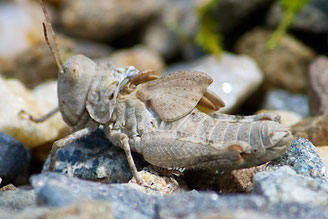Change is Good

All insects change in form as they grow; this process is called Metamorphosis. There are two kinds of insect metamorphosis, simple (or incomplete) and complex (or complete) metamorphosis.
- Simple metamorphosis: Grasshoppers, along with dragonflies and many other insects, go through simple metamorphosis. This is a 3 stage process: Egg to Nymph to Adult. The young nymphs usually look much like small wingless adults. The wings develop externally.
Here is a partial list of insects that use simple metamorphosis.
- Complex metamorphosis: Butterflies and moths undergo complex metamorphosis, in which there are 4 distinct stages: Egg to Larva to Pupa to Adult. With Complex metamorphosis, the immature insects and the adults have different forms, often live in different habitats, and may have very different behavior.






